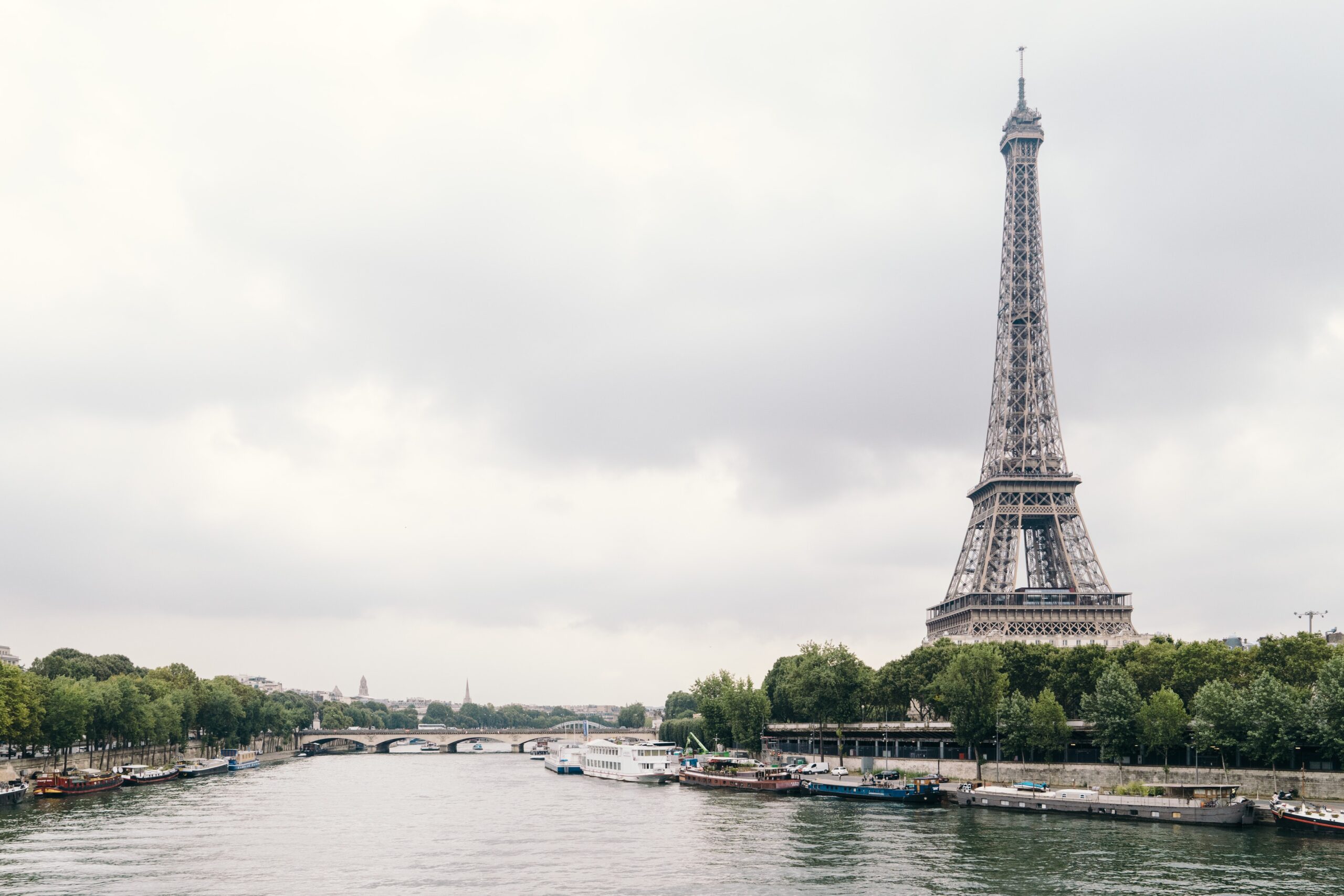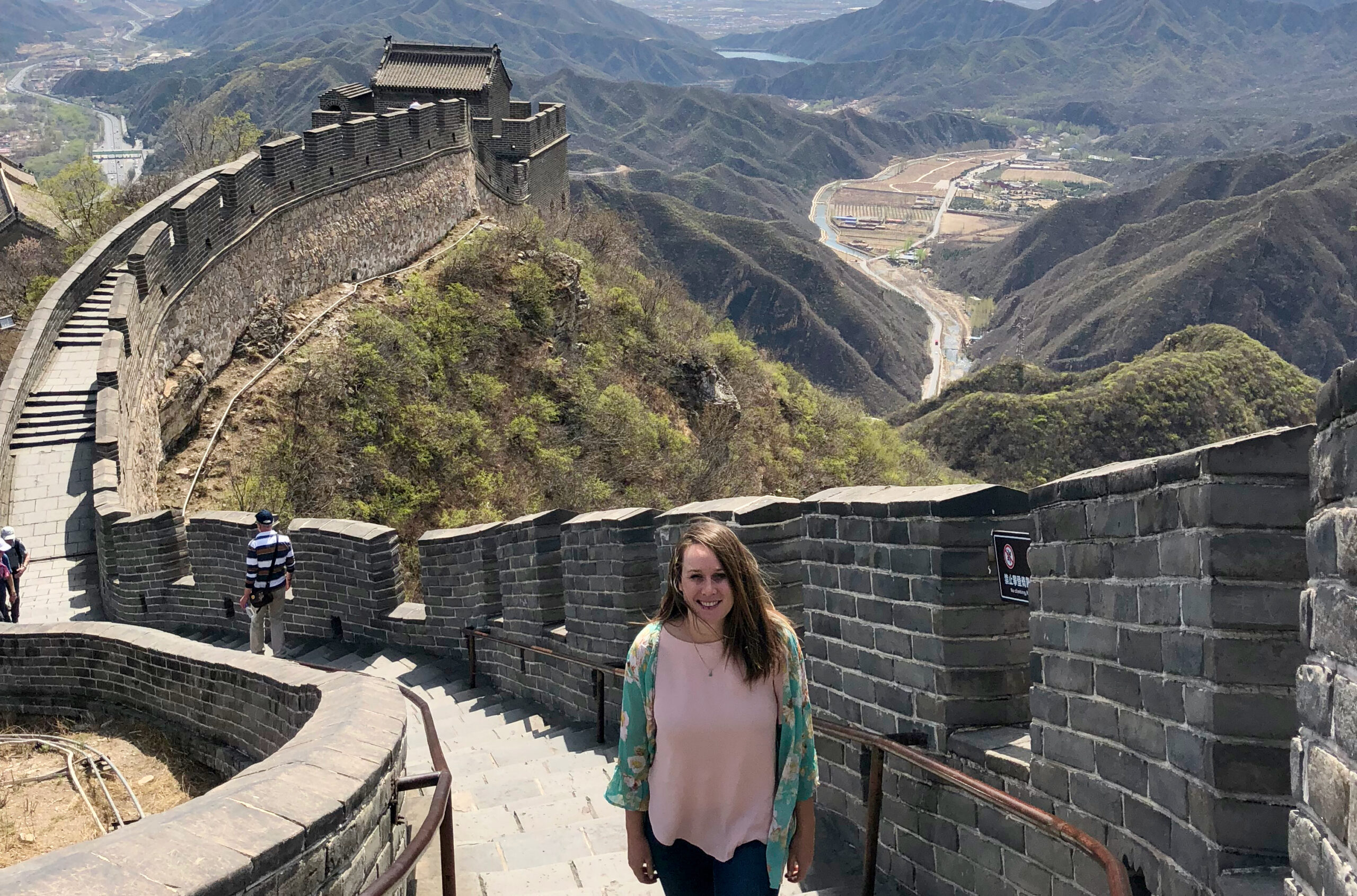
Encounters With Ancient China in Beijing
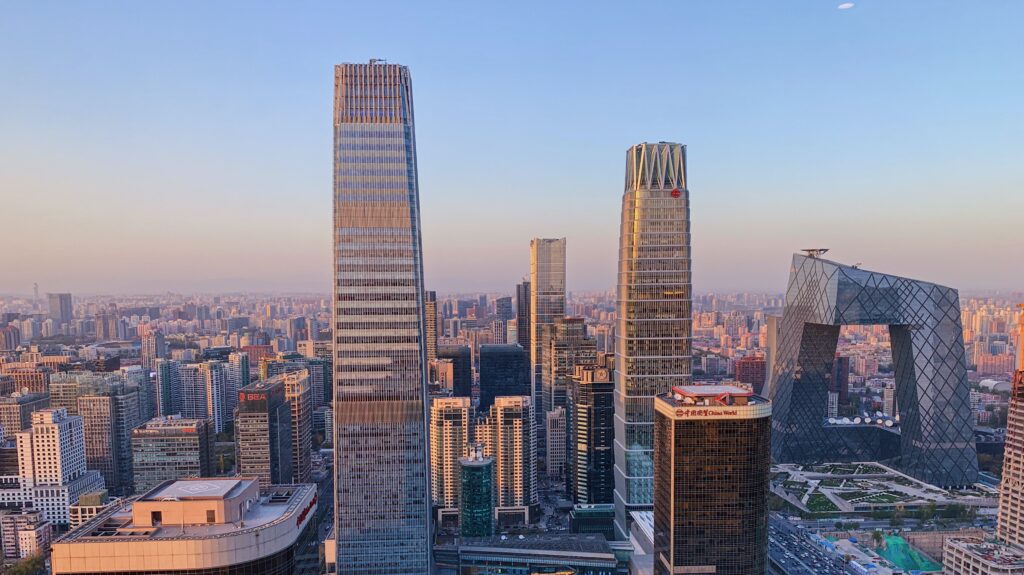
From a bird’s eye view, at first glance there’s little that appears to remain of ancient China in Beijing. As our plane makes its descent into Beijing Capitol International Airport the scene that unfolds is one of distinct modernity – a sea of tall skyscrapers shrouded by infamous smog.
The view out the window in my hotel room 12 floors up paints a similar picture – grey skies and a concrete jungle lay below. From the streets of the Central Business District the view is equally ubiquitous with one notable exception; the expected sound of honking horns is dominated by the swoosh of bicycle wheels spinning on pavement.
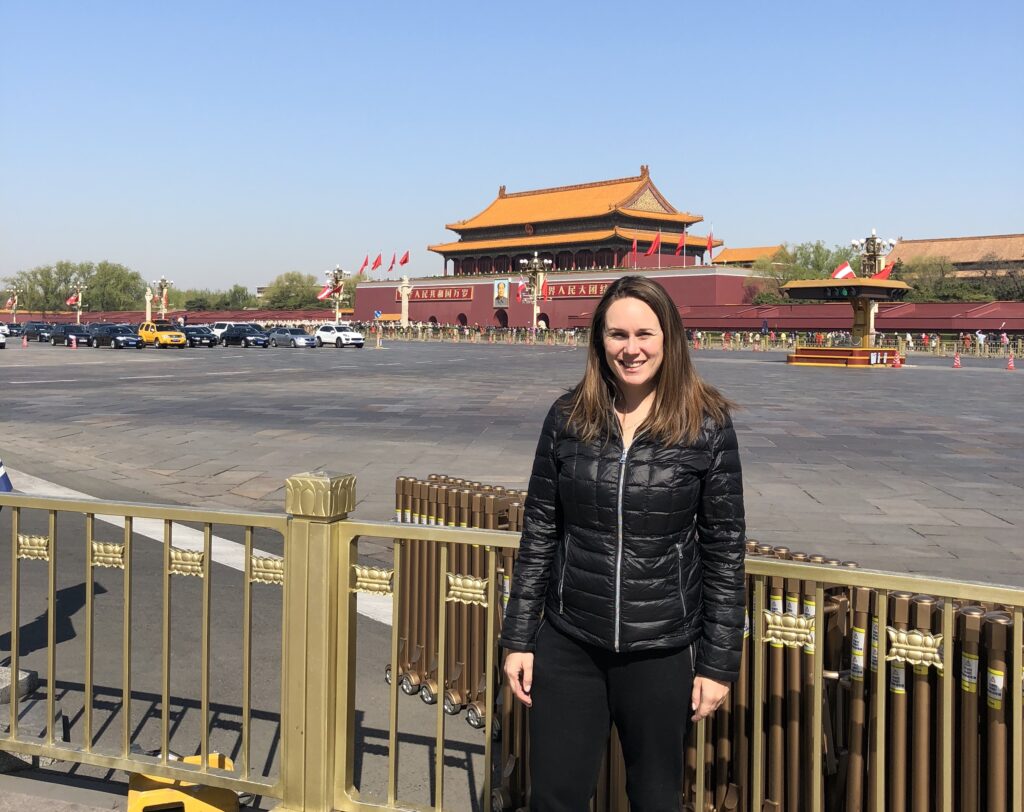
Initial impressions aside, remnants of the ancient abound in Beijing, making the city both China’s political and cultural capital. While much of the architecture looks and is new, the city’s long history dates back to 475 BC. Here the modern has sprung up atop the old, weaving the stories of eight centuries into one city that is now home to more than 21 million people.
As we find ourselves in the midst of a winter surge of a global pandemic that is claiming the lives of so many this moment in time feels all-consuming. In the bleak gravity of 2020 the history of humanity has faded away and the current geopolitical landscape points our thoughts of China down a singular path. But China has many stories to tell. The ancient sights of Beijing reflect the brevity of our lives, beckoning us to remember that dynasties rise and fall, that human progress is a continual forward march that builds upon the old and renders what once was new ancient.
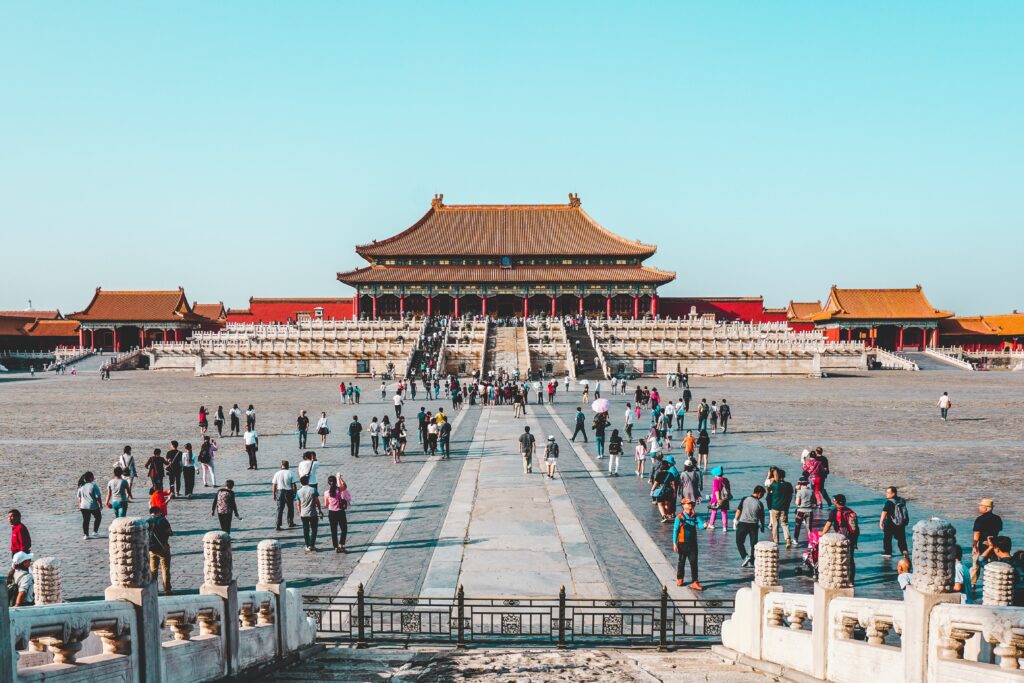
stock photo
The Forbidden City
The Forbidden City is the world’s largest imperial palace and China’s most visited tourist attraction. Built in 1420 during the Ming Dynasty, the name references the fact that for 500 years the palace and its grounds were off limits to commoners.
The sprawling grounds contain 90 structures and fill a space that is 10 times larger than the White House and 5 times larger than the Buckingham Palace. It turns out humans in 2020 aren’t the only ones living their lives on lockdown. The grounds of the Forbidden City are so large that many of the royals who lived here never left the property during their entire lives.
The architecture of the imperial palace reflects Confucian principles and philosophies. From marble terraces that represent hierarchy to phoenix and dragon motifs that represent royalty, the architecture is rife with symbolism. A great resource on this can be found here.
Fun fact for my fellow Disney-philes: at the end of the animated version of Mulan, the Disney heroine rescues the emperor from the Huns and saves China. The emperor’s palace in the film was based on the Forbidden City and a viewing of the film gives a remarkably accurate feel for the vastness of the real attraction in Beijing.

stock photo
Temple of Heaven
The Temple of Heaven is another architectural gem build during the Ming dynasty in roughly 1420. Don’t let the name fool you – this ancient sight is not merely a temple but rather a religious complex that covers even more land than the Forbidden City.
The most notable structure here is the Hall of Prayer for Good Harvests, a tall and circular building that once hosted annual ceremonies of prayer for a good harvest with China’s emperors.
While these ancient prayer practices are no longer part of Chinese culture, the grounds of the temple are now a park where many locals come to do morning exercises, dance or sing. While our religions and customs may have changed throughout the ages, our deep human need to connect with the divine through movement remains.
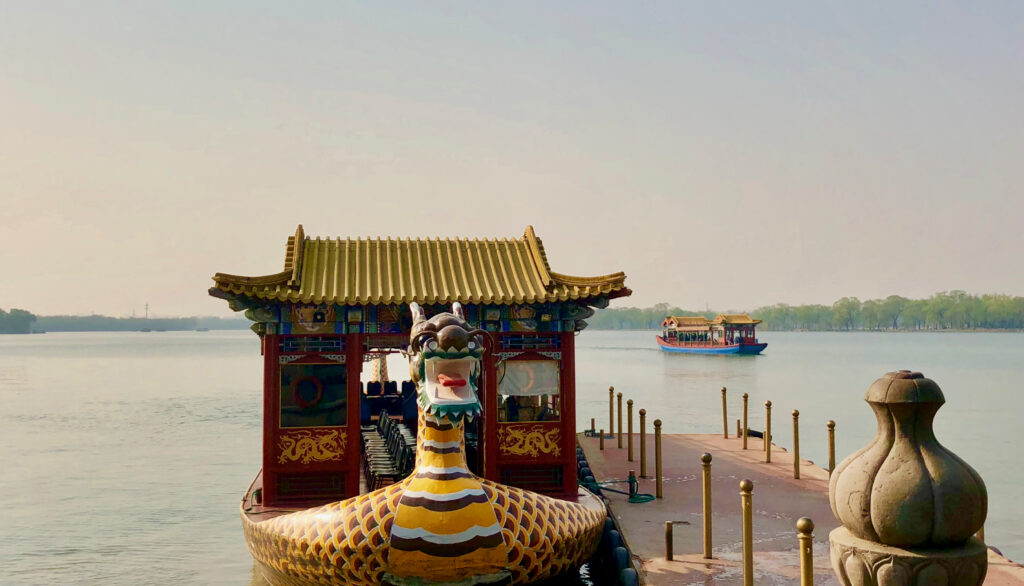
Summer Palace
If there’s one attraction in Beijing that offers a window into China’s soul it’s the Beijing Summer Palace. Similar to the Temple of Heaven the name is deceptive – this ancient sight is actually an imperial garden complex that unfolds more like a theme park of gardens rather than our western concept of the word. It may as well be a theme park – China’s largest Royal Park occupies 700 acres (compare that to Disneyland’s 85 acres).
Located on the shores of Kunming Lake, the UNESCO Heritage site set the stage for Chinese garden design with horticulture that harmonizes plants and paths, water and land, man-made structures and natural landscapes.
Locally the sight is known as ‘Nourishing Peace Garden,’ and the lessons offered here of creating a space of peace in an unending sea of chaos and news are something we can all use right now.
Great Wall of China
The Western notion of China is not complete without its Great Wall, the world’s biggest piece of ancient architecture. Built over a period of 2,000 as a defense fortress, the entirety of the wall’s branches stretch for 13,171 miles – that’s nearly 5 times the width of the United States!
The most popular section of the wall for visitors is the Badaling Great Wall Section, located just an hour north of Beijing. A climb to the top of this section takes roughly an hour. Though your calves may be sore for the next four days, reaching the top is a worthy pursuit – while the crowds at the bottom are shoulder to shoulder, the steep, small steps slowly cause the stream of visitors to fade away and only a handful of visitors remain at the summit.
The smog of Beijing has lifted and the sky is a remarkable blue. Mountains spill out before me and the wall stretches on in the distance, disappearing over a ridge. Much of us may crumble, but the feats of humanity have surprising longevity.
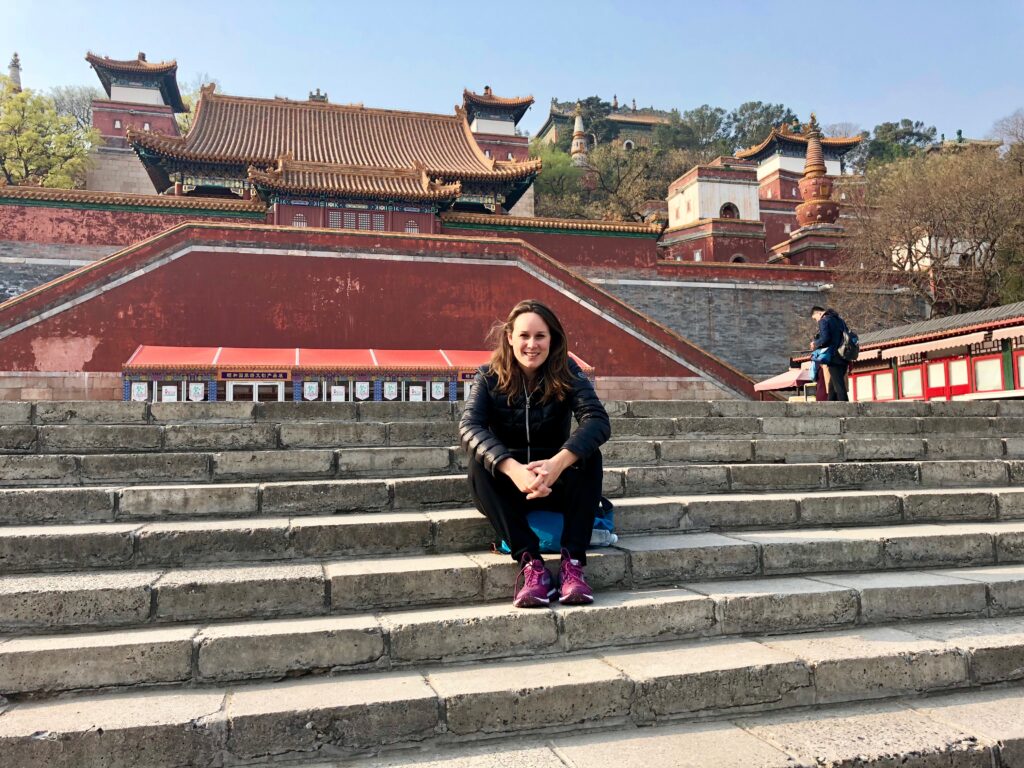
Tips for Visiting Attractions in Beijing
When we can travel again, there are a few tips for visiting attractions that I learned the hard way. Learn from my mistakes!
- Translations are key
- Once you leave your hotel in Beijing don’t expect to encounter anyone who speaks English. Sure, some people do, but unlike other places in the world you shouldn’t expect to be able to find someone to help you in English, not even at the major tourist attractions. Bring along a translation app on your phone, or if you travel iphone free like me, ask the concierge at your hotel to write the names of the attractions you plan on visiting throughout the day in Mandarin so you can show to a taxi driver if you get lost.
- Bring your own toilet paper
- Public bathrooms in Beijing and elsewhere in China are squat toilets. Bring your own toilet paper and hand sanitizer for a more comfortable experience.
- Wear comfortable shoes
- Beijing’s ancient sights are indeed ancient so pathways are unstable and uneven. Do yourself a favor and wear comfortable shoes as you will be on your feet a lot.
- Plan to take your time
- The grounds of Beijing’s ancient sights are sprawling and vast. Plan to take your time to explore the full extent of the Forbidden City, the Great Wall of China and the Summer Palace.


